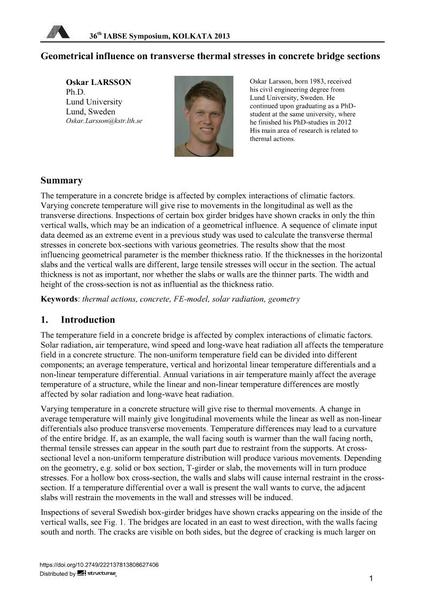Geometrical influence on transverse thermal stresses in concrete bridge sections

|
|
|||||||||||
Bibliographic Details
| Author(s): |
Oskar Larsson
|
||||
|---|---|---|---|---|---|
| Medium: | conference paper | ||||
| Language(s): | English | ||||
| Conference: | IABSE Symposium: Long Span Bridges and Roofs - Development, Design and Implementation, Kolkata, India, 24-27 September 2013 | ||||
| Published in: | IABSE Symposium Kolkata 2013 | ||||
|
|||||
| Page(s): | 1-8 | ||||
| Total no. of pages: | 8 | ||||
| Year: | 2013 | ||||
| DOI: | 10.2749/222137813808627406 | ||||
| Abstract: |
The temperature in a concrete bridge is affected by complex interactions of climatic factors. Varying concrete temperature will give rise to movements in the longitudinal as well as the transverse directions. Inspections of certain box girder bridges have shown cracks in only the thin vertical walls, which may be an indication of a geometrical influence. A sequence of climate input data deemed as an extreme event in a previous study was used to calculate the transverse thermal stresses in concrete box-sections with various geometries. The results show that the most influencing geometrical parameter is the member thickness ratio. If the thicknesses in the horizontal slabs and the vertical walls are different, large tensile stresses will occur in the section. The actual thickness is not as important, nor whether the slabs or walls are the thinner parts. The width and height of the cross-section is not as influential as the thickness ratio. |
||||
| Keywords: |
concrete solar radiation geometry FE-model thermal actions
|
||||
